Scottish lighthouses, from Ardnamurchan to Muckle Flugga, feature in new book, Legendary Lighthouses of Britain
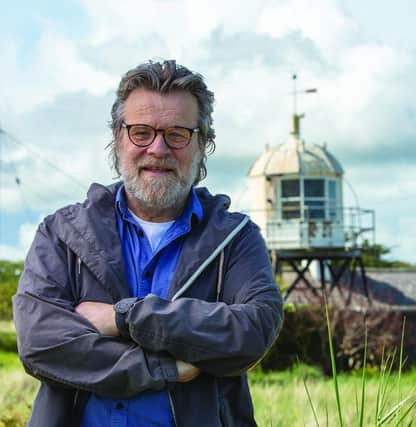

There’s so much that’s appealing about lighthouses, including their fortitude and constancy.
However stormy the seas, they remain a guiding beacon.
If you’re a fan, you’ll be interested in the new book from artist and author Roger O’Reilly, Legendary Lighthouses of Britain: An Illustrated Guide to the Sentinels that Guard Our Shore. It’s the ultimate paean to these structures, and there are plenty of mentions for the Scottish ones, from Ardnamurchan to Mull of Galloway. O’Reilly tells us more.
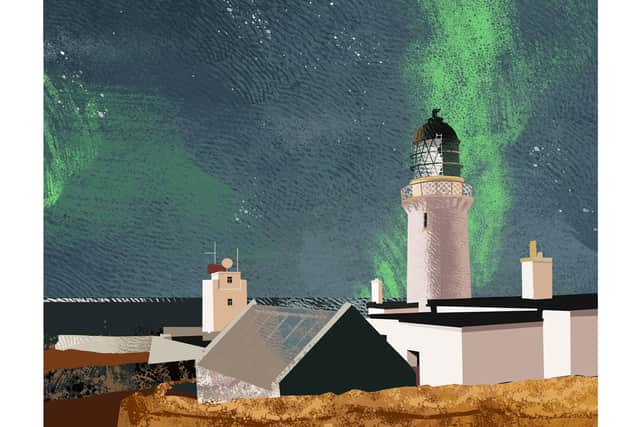

Why lighthouses?
Advertisement
Hide AdAdvertisement
Hide AdI grew up on the east coast of Ireland and every summer my friends and I would cycle to the sand dunes that tumbled down to the mouth of the River Boyne. There stood three truncated lighthouses, like Daleks on stilts, gazing forlornly out to sea and coming to life only as dusk crept in and we reluctantly turned our bikes homeward. The sense of reassurance that I felt in the glow of those beacons has stayed with me ever since.
Around five years ago, I set about drawing the lighthouses along Ireland’s south coast.As a professional artist, I’d worked on many prestigious advertising campaigns and always has a fondness for the promotional travel posters of the 1930s and 40s. These iconic Art Deco designs, rendered in simple flat colours with minimum text and a clear typeface, struck me as the perfect style for my lighthouse illustrations. Inspired by graphic artists such as Frank Newbould, whose work appeared in campaigns for London Transport and Great Western Railways, I began to produce a nostalgic homage to Irish lighthouses, which I published together as a book, Lighthouses of Ireland, in 2018. Within a few years, I had embarked on an even more ambitious project: a compendium of lighthouses across the British Isles.
Are there lots of lighthouse nerds in the UK?
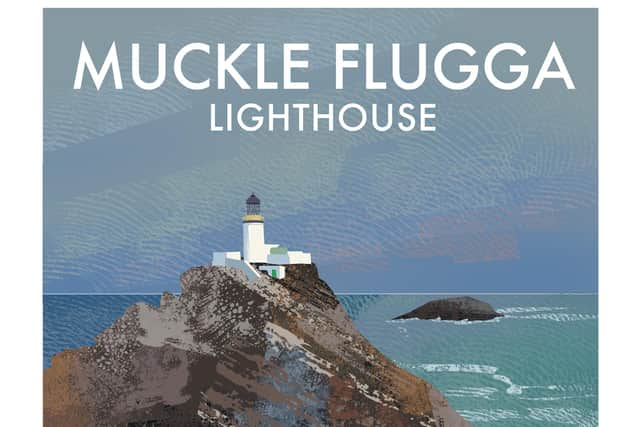

People love these structures for a variety of reasons; from being markers on a spectacular walk or sailing trip, to a fascination with the history of this technology which has served our maritime communities since Roman times. Some are seduced by the pure romance of these imposing and mysterious beacons or fascinated by the stories of the extraordinary souls who built and operated them.
Did you do the writing part first, or the pictures?
The pictures come first. Where possible, I sketch and photograph the lighthouse to get the composition. I then take these back to the studio where I’ll illustrate straight onto a digital screen. It’s similar to how an animator might work and keeps the colours crisp, just like the bright and bold travel posters that originally inspired me. To add my artist’s mark (something that can be tricky when using technology), I scanned in my thumbprint and use it to bring texture into the sea and skies.
I’m always aware of the locality that the lighthouse serves and this informs my research on it as much as any tale of derring-do or infamy. I love the research aspect of the project. Often the problem is figuring out what you can afford to leave out rather than what you should put in.
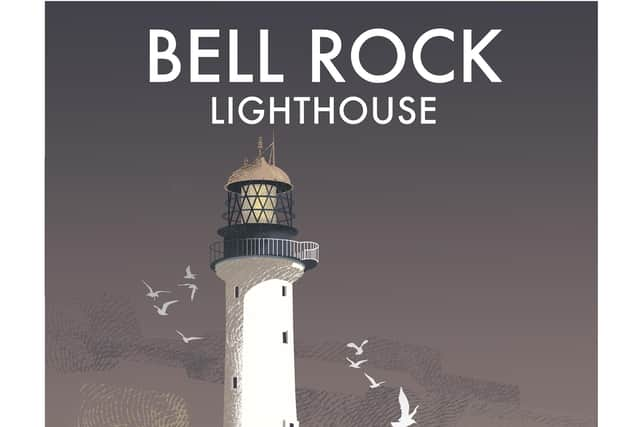

Did you visit all of them?
Over the past five years, I’ve captured around 350 structures. I’ve visited most ‘in person’, even though that’s not always easy. Offshore towers can often be reached only by boat, and sometimes I’d arrive at the coast on a calm day, only to be told there’d be no sailing because a mile out to sea a storm was brewing. Some lighthouses, like Bishops Rock in the Isles of Scilly and Skerryvore on the tip of Tiree, are only accessible by helicopter: getting to these would involve specialist training in surviving a crash, which puts them off limits for me.
The Covid pandemic put paid to numerous plans to criss-cross the country. The far flung ones were just too difficult to get to given the time frame.
Many of the lighthouses welcome visitors and allow you to climb to the lantern room, but it’s worth checking in advance. At Fraserburgh in Aberdeenshire, the Museum of Scottish Lighthouses provides a unique and outstanding space dedicated to the history of all things lighthouse related. While you’re there, you can also visit Kinnaird Lighthouse itself, the oldest lighthouse on the Scottish mainland.
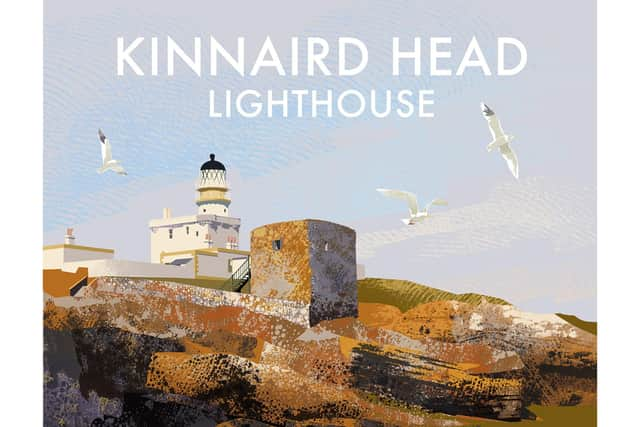

Are any under threat?
Advertisement
Hide AdAdvertisement
Hide AdToday’s GPS technology means many lighthouses risk becoming redundant. They remain, however, an important part of our coastal heritage and I truly believe they should be preserved – whether as museums, like Longstone Lighthouse in the Farne Islands, accommodation like Lundy Lighthouse in Devon or as quirky attractions like Folkestone Lighthouse seafood and champagne bar.
Anything unique about the Scottish lighthouses?
Scotland has some of the most interesting and ground-breaking lighthouses thanks in large part to the genius of three generations of the Stevenson engineering family, and in general these sentinels are set in breath-taking and spectacular settings.
The western shores and islands in particular are full of drama, with their shorelines and cliffs exposed to the brunt of the wild Atlantic waves. Further east is the infamous Pentland Firth where the Atlantic channels into the North sea creating ferocious currents and tides with monikers such as the Swilkie, the Bore of Huna, the Wells of Tuftalie, the Duncansby Bore, and the Merry Men of May. Despite their charming names, these currents have caused havoc at sea and inspired some of the most iconic lighthouses such as Stroma, Dunnet Head and the Pentland Skerries to safely guide vessels past these hazards and threats.
Favourite Scottish ones?
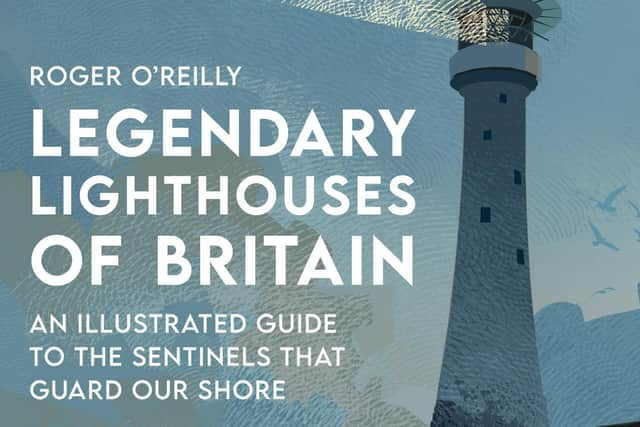

I’m often asked which my favourite lighthouses are and it’s like being asked your favourite Scotch whisky. It’s not so much that you don’t have favourites, rather that it’s such a shame not to give the others a try. That said, Bell Rock and Skerryvore are up there for daring and engineering brilliance. The Isle of May makes the cut for endurance and Neist Point for sheer beauty and drama.
If you want to explore the legacy of Scottish lighthouses, there’s probably no better place to start than Bell Rock, 11 miles off the Angus coast at Arbroath. It’s the oldest rock lighthouse in Britain and exemplifies the engineering finesse and elegance that the Stevenson family became famous for. The name is reputed to have originated when the 14th century Abbot of Aberbrothock, sailed out and fitted a device containing a wave activated warning bell on the rocks. Whether it worked or not is unknown, but legend has it that the bell lasted only a year before a Dutch pirate by the name of Ralph the Rover stole it, only to founder like a pantomime villain on the self same rocks 12 months later.
Could you have been a lighthouse keeper?
I like to think I’m resilient and content in my own company, but some of the tales I’ve heard of lighthouse keepers, especially those attending the offshore stations make me wonder if I could have stuck it out. Before the arrival of helicopters, the keepers and those who supplied them were hostage to the weather. Landing on a lighthouse in the teeth of a storm and being hauled up in a breeches buoy and pully takes a special type of courage. Lighthouse keepers, and their families, were a breed apart. Endlessly resourceful, disciplined and stalwart in the face of often atrocious weather, they were often tasked at putting their lives at risk in the service of safeguarding others. I think I’m happier keeping my paints wet and my feet dry.
Legendary Lighthouses of Britain by Roger O’Reilly is out now, £25, Watkins Publishing
Comments
Want to join the conversation? Please or to comment on this article.